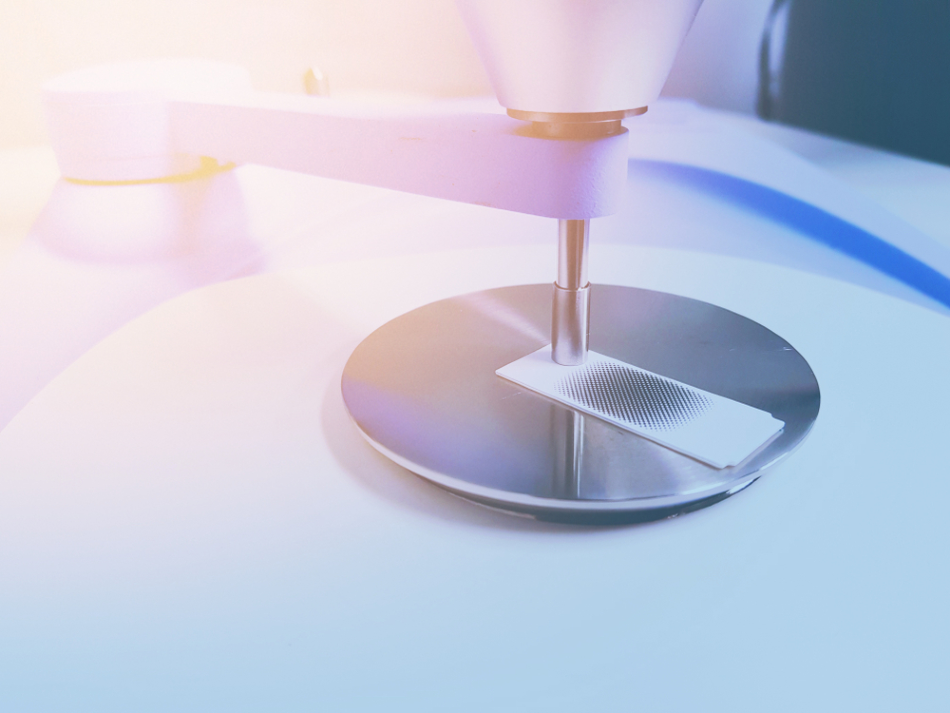
Image Credit: Ken stocker/Shutterstock.com
Spectroscopy is a type of analytical technique that is used to investigate interactions between matter and electromagnetic radiation. Infrared (IR) spectroscopy is a non-destructive spectroscopic technique that provides a molecular fingerprint. Sensing probes in IR Spectroscopy have many uses, including scanning biological cells, identifying diseases, sensing biological targets and helping to identify structures and environments.
How IR Spectroscopy Works
Infrared spectroscopy works by molecules vibrating and bonds stretching as they absorb infrared radiation. For a transition to be detectable by IR, a beam of IR light is passed through a sample. The molecules experience dipole moment changes throughout the vibrations. When the vibrational frequency of the bonds in a sample matches the frequency of the IR radiation, adsorption occurs and a spectrum is then produced.
Samples analyzed with IR can be identified by the functional groups present. The functional groups absorb heat at different frequencies and produce a vibrational spectrum. The spectrum can then be compared to a frequency table to determine which important functional groups are present in a sample.
Advantages and Disadvantages of Infrared Spectroscopy
The major advantages of using IR are that it is a non-invasive and non-destructive method, so samples can remain intact. The main problem with IR when studying biological samples and carrying out biological research is the fact it is difficult to rely on the intrinsic vibrational modes of the biological molecules to identify structures and environmental information in a site-specific manner.
Near-Infrared for Sensing Biological Targets
Near-infrared fluorescence (NIRF) is a type of fluorescence spectroscopy. NIRF materials are labeling reagents that can be used for the sensitive determination and imaging of biological targets. With the near-infrared region, biological samples have low background fluorescence signals, but this produces a high signal-to-noise ratio.
The technique of near-infrared radiation is able to penetrate deeper into sample matrices due to low light scattering, meaning both in vivo and in vitro analysis can be carried out with NIRF probes.
Near-IR can also be used to measure the metabolism of athletes in a technique known as time-domain near-infrared spectroscopy (TD NIRS). TD NIRS is an optical technique that allows for non-invasive measurements of the hemodynamic parameters in muscular tissue. The probe is custom 3D-printed and able to host optical elements for the signal acquisition from the muscles.
Backbone-Based IR Probes
Vibrational modes of the protein backbone with IR provide structural information. An example of a backboned-based IR probe is the amide I probe, which uses the C=O stretching vibration.
Isotope-editing is the most popular method to introduce a site-specific amide I probe into the protein backbone. It replaces a 12C=16O group with either 13C=16O or 13C=18O. The isotopic substitution causes a red-shift of the frequency of the amide I vibrator of interest, which breaks up any couplings with other amide I modes and makes the isotope-edited C=O group a vibrational reporter for local structures and environments.
Isotope editing can be split into two separate categories. With the first category, the labeled C=O group is used as a stand-alone probe of the local structure and environment of proteins. In the second category, the vibrational coupling between two or more labeled carbonyl groups can be used to provide structural information about the protein’s secondary and tertiary levels.
Side-Chain-Based IR Probes
Back-boned based IR probes are limited in diversity due to the unique chemical structure and identity of the protein backbone. Side-chained based IR probes have greater chemical diversity, making it possible to create a vast array of sidechain-based IR probes.
The types of side-chain based IR probes include C=N stretching, Azide stretching, C-O stretching, Carbon-Deuterium (C-D) stretching, metal carbonyl stretching and vibrations of thiol, phosphate and fluorocarbon.
Mid-IR Sensors
Attenuated total reflection (ATR) spectroscopy can be used at the mid-IR range to detect carbohydrates such as ethanol, glucose and fructose.
The ATR probe is connected to a spectrometer by a polycrystalline infrared fiber (PIR). There are different types of ATR probes, but common probes include those with a diamond crystal or those with a detachable PIR loop head. The total optical path of ATR analysis is formed by a penetration depth of ATR crystal’s evanescent field times the number of internal reflections defined by the ATR element geometry.
Nano-FTIR for Extra Terrestrials
A development in scattering-type near-field scanning optical microscopy (s-SNOM) has meant that you can now get IR spectral information at sub-micron length scales. The imaging technique works by using an atomic force microscope (AFM) tip as an optical near-field probe to focus incident electromagnetic radiation.
The submicron scale allows for the analysis of minerals within natural samples, such as a chondrule from the Murchison meteorite and a cometary dust grains from NASA's Stardust mission. The technique has also been used recently to study plasmons in graphene and for spatial mapping of electronic transitions in oxides.
References and Further Reading
- https://www.azooptics.com/Article.aspx?ArticleID=1291
- Amiot, C., Xu, S., Liang, S., Pan, L. and Zhao, J. (2008). Near-Infrared Fluorescent Materials for Sensing of Biological Targets. Sensors, 8(5), pp.3082-3105.
- Re, R., Pirovano, I., Contini, D., Spinelli, L. and Torricelli, A. (2018). Time Domain Near Infrared Spectroscopy Device for Monitoring Muscle Oxidative Metabolism: Custom Probe and In Vivo Applications. Sensors, 18(1), p.264.
- Ma, J., Pazos, I., Zhang, W., Culik, R. and Gai, F. (2015). Site-Specific Infrared Probes of Proteins. Annual Review of Physical Chemistry, 66(1), pp.357-377.
- Bogomolov, A., Heßling, M., Wenzel, U., Princz, S., Hellmuth, T., Bernal, M., Sakharova, T., Usenov, I., Artyushenko, V. and Meyer, H. (2015). Development and testing of mid-infrared sensors for in-line process monitoring in biotechnology. Sensors and Actuators B: Chemical, 221, pp.1601-1610.
- https://www.nature.com/articles/ncomms6445
Disclaimer: The views expressed here are those of the author expressed in their private capacity and do not necessarily represent the views of AZoM.com Limited T/A AZoNetwork the owner and operator of this website. This disclaimer forms part of the Terms and conditions of use of this website.